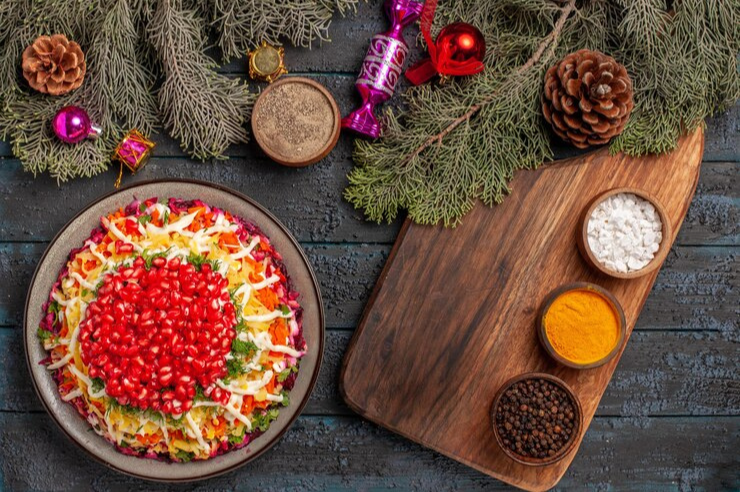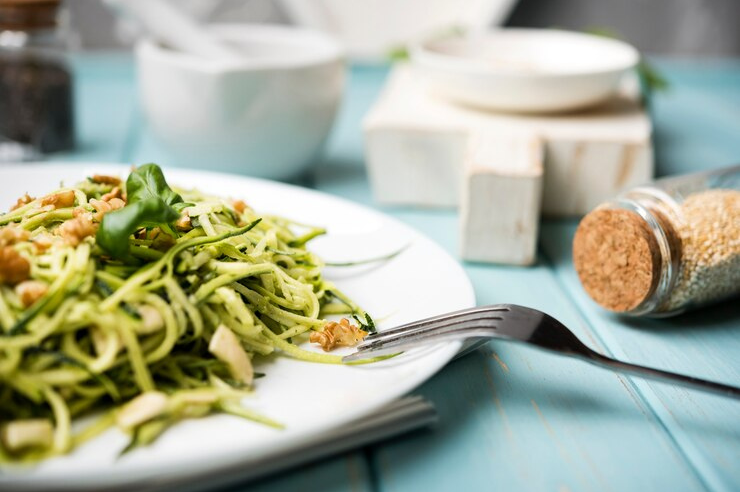Christmas, a holiday cherished by millions around the world, is not only a time for family, celebration, and gift-giving but also a time for feasting. The food served at Christmas gatherings often carries deep religious significance, reflecting the holiday’s spiritual roots. This influence is seen in the customs and traditions of different cultures, with each one integrating religious beliefs and practices into the foods enjoyed during the season. In this blog, we explore how religion has shaped the Christmas food culture, particularly in Christian communities and

The Christmas food culture is a rich and diverse tapestry, shaped by centuries of religious tradition and cultural exchange. Whether it’s a humble Christmas Eve meal or a grand holiday feast, the food on the table is a reflection of the values, history, and faith of the people who prepare it. For Christians, Christmas is not only a celebration of the birth of Jesus Christ but also an opportunity to partake in food traditions that have been passed down for generations. Let’s take a deeper look at how Christianity and religion, in general, have influenced Christmas food culture around the globe.
The Intersection of Religion and Christmas Celebrations

Christmas, for Christians, is primarily about the celebration of the birth of Jesus. This religious observance has always been closely tied to food, as shared meals represent fellowship and thanksgiving. The timing, ingredients, and preparation of these meals are often influenced by religious rituals, with fasting periods before Christmas leading to celebratory feasts. The foods served during these celebrations often carry religious symbolism, from the types of meat chosen to the baked goods enjoyed. Additionally, food is a medium through which Christians express gratitude for Jesus’ birth, with feasts being shared in His name.
Christianity and Christmas Food Culture: Traditional Dishes with Religious Symbolism
One of the most significant ways Christianity has influenced Christmas food culture is through the religious symbolism embedded in traditional Christmas dishes. For instance, the roasted meats commonly found on Christmas tables in many countries have biblical significance. In the Bible, lamb is a symbol of Christ (the “Lamb of God”), and its presence on Christmas tables in countries like Greece and Italy reflects this symbolism. Similarly, in many parts of Europe, fish is often served as a substitute for meat on Christmas Eve, due to the tradition of fasting during Advent.
In some cultures, bread plays a prominent role in Christmas meals. The tradition of baking a Christ’s bread—a type of bread adorned with religious symbols or even a nativity scene—has long been a way to incorporate the sacred into the meal. Other festive foods like Christmas cakes (often enriched with dried fruits and spices) reflect biblical references to offerings of frankincense and myrrh, gifts that were brought to the newborn Jesus.
In countries like Poland, the Wigilia meal on Christmas Eve includes twelve dishes to represent the twelve apostles. This symbolic act reinforces the religious significance of the meal, highlighting the connection between food and faith in the Christmas celebration.
Global Christian Influence: How Religion Shapes Christmas Food Traditions
Christianity’s spread across the globe has led to a rich diversity of Christmas food culture. From Europe to the Americas and beyond, Christianity has shaped the way people celebrate the birth of Christ with food, and these traditions have evolved to suit regional tastes and customs.
In Europe, Christianity’s influence on the Christmas table is evident in a variety of traditional dishes. In the UK, the iconic Christmas pudding is rich with symbolism, believed to represent the twelve apostles. In countries like Germany and Poland, the tradition of serving roasted meats, fish, and a variety of side dishes for Christmas Eve is a reflection of centuries-old Christian customs. The Stollen bread in Germany, decorated with powdered sugar to symbolize the swaddling clothes of the infant Jesus, is another example of food that embodies the religious significance of Christmas.
In Latin America, Christianity has shaped Christmas food traditions through the festive dishes enjoyed across the region. In Mexico, tamales are a traditional food, often made during Christmas time to symbolize the hardships of Mary and Joseph as they searched for shelter. In South America, panettone (an Italian-origin cake) and ponche (a hot fruit punch) are commonly consumed as part of the Christmas feast, influenced by both religious and cultural practices.
In Asia, especially in the Philippines, which has one of the longest and most devout Christmas celebrations in the world, religious food traditions are intertwined with local cuisine. Lechon (roast pig) and bibingka (rice cake) are staples on the Christmas table, reflecting both the celebratory nature of Christmas and the religious roots that tie Filipinos to their Christian faith.
Religious Restrictions and How They Shape Christmas Meals
One key aspect of the Christmas food culture that has been shaped by religion is the practice of fasting, which often influences the types of food served during the holiday. Many Christian traditions observe periods of fasting and abstinence leading up to Christmas, which affects what foods are consumed and when. For example, Catholic and Orthodox Christians traditionally fast from meat during Advent, making fish or vegetarian dishes a central part of Christmas Eve meals.
This religious fasting practice has resulted in a variety of regional dishes being prepared specifically for Christmas Eve. In countries like Italy, the Feast of the Seven Fishes is an important tradition, where families serve seven different kinds of fish, representing the seven sacraments of the Church. In Greece, baklava and other sweet treats are prepared in anticipation of the Christmas feast, celebrating the end of fasting with rich, indulgent foods.
Non-Christian Religious Traditions and Their Influence on Christmas Food Culture
While Christianity has undoubtedly played the leading role in shaping Christmas food culture, non-Christian religious traditions have also influenced how Christmas meals are prepared and enjoyed. In Jewish communities, the celebration of Christmas is often a time for gathering with family and partaking in a festive meal that incorporates cultural traditions. Though not directly linked to Christianity, some Jewish families may prepare foods like latkes (potato pancakes) during the holiday season, blending elements of Hanukkah and Christmas.
In Islamic communities, where Christmas is not a religious holiday, the emphasis may be placed on the cultural aspects of the season. Foods influenced by Islamic traditions, such as dates, honey, and various sweets, are commonly found in Middle Eastern Christmas meals, reflecting the influence of religion and the sharing of food.
How Religion Continues to Shape Modern Christmas Food Culture
The role of religion in shaping Christmas food culture is still evident today, with many families continuing to adhere to religious traditions in their holiday meals. Whether it’s maintaining the tradition of fasting before Christmas or preparing foods that carry religious meaning, the spirit of faith remains an integral part of the holiday season.
Conclusion: A Global Christmas Food Culture Reflecting Faith

As we’ve explored, Christmas food culture is deeply intertwined with religious practices and beliefs, with Christianity at the heart of most Christmas food traditions around the world. Whether it’s the symbolic dishes of roast lamb and fish, the rich customs passed down through generations, or the modern adaptations that reflect both faith and culture, the Christmas meal is a celebration of both religious devotion and the joy of sharing with loved ones. The way religion shapes Christmas food traditions continues to evolve, but the heart of the celebration remains rooted in faith, family, and the spirit of giving.
Feel free to contact us to find out more about us and our services, explore who we are, or discuss advertising opportunities. Don’t overlook subscribing to our magazine for monthly updates, exclusive insights, and more exciting content!




